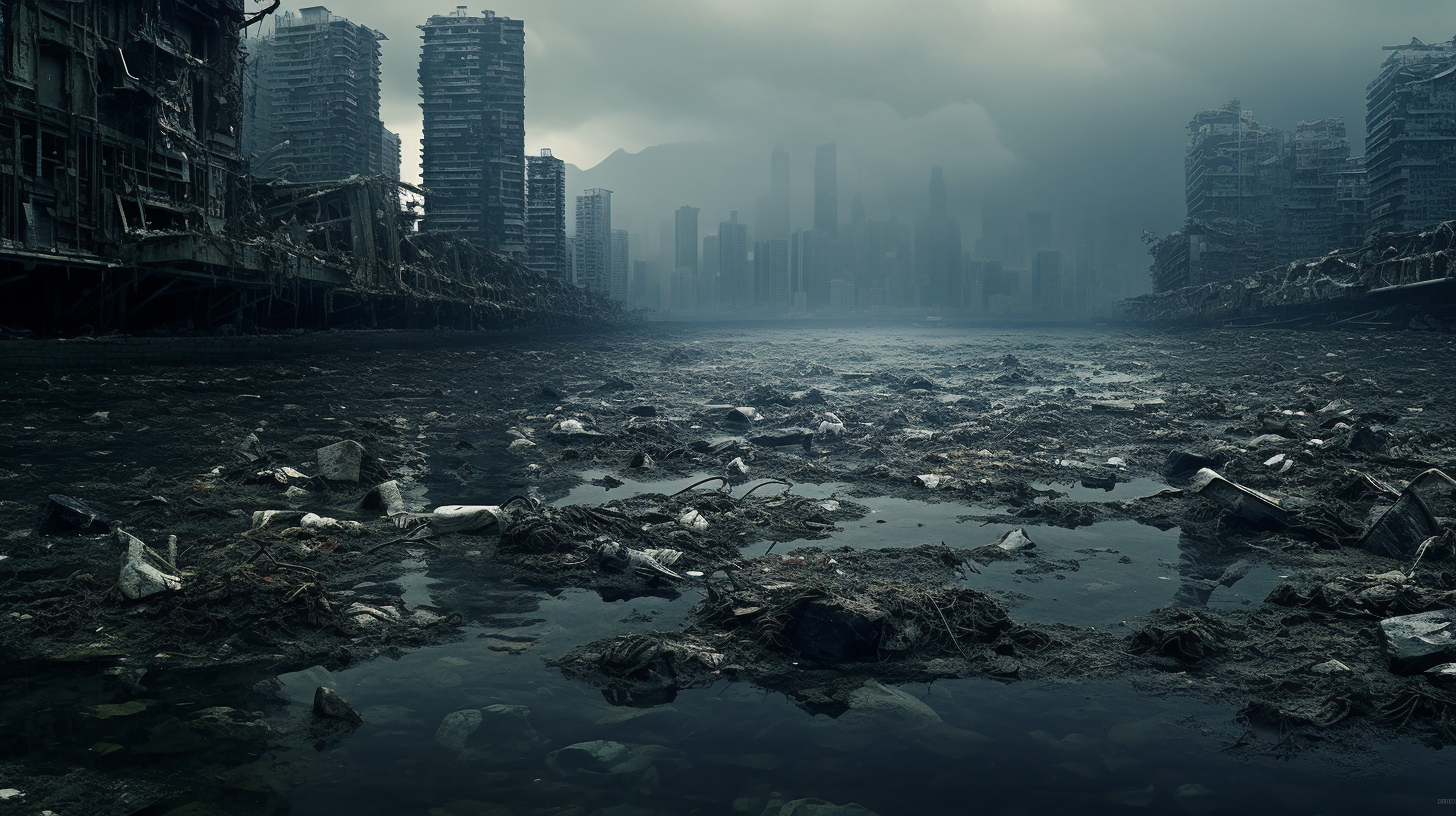In a world where terra firma is a relic term of the past, where the once-mighty continents have succumbed to the aqueous embrace of a swollen sea, humanity treads water on the brink of an Atlantis redux. The Aqueous Archipelago, once dots on the sprawling blue of our maps, now charts the vestiges of human persistence amidst the climate apocalypse. These islands are the new abnormal, the might-have-beens that have become must-haves, comprising a precarious network of human habitation. Our story is awash with desperation and innovation, a floating testament to human adaptability in a world irreparably changed.
Take for instance the life of Maria Gonçalves, whom we met on her floating greenhouse, a lush oasis bobbing gently amidst the saltwater sprawl. Her hands, weathered as the reclaimed wood underfoot, work meticulously to tend to her precious cultivars.
Beyond agriculture, transportation and energy sectors have undergone a sea change of their own. A network of solar-powered aqua-buses skims across the water’s surface, connecting island to island. The remnants of wind farms, once lonesome sentinels on empty plains, now rise triumphantly from the waves as beacons of sustainable energy harvest against a backdrop of endless water.
And yet, the struggle persists. Amidst innovation, there is loss – cultures submerged, histories washed away, millions displaced. The concerted effort to survive on this aquatic frontier does not undo the environmental sins of the past but rather serves as a haunting reflection of a world that could have been. To live in the Aqueous Archipelago is to navigate a day-to-day existence fraught with the perils of an environment that offers no quarter. Storms that once menaced coastlines now threaten the very heart of human habitation. Communities must gird themselves for the unpredictable spate of a nature in tumult – a grim reminder of their forebears’ failed stewardship.
Despite the dystopian sheen, life burgeons amidst adversity. Moments of joy punctuate the everyday struggle – children’s laughter as they dive from their dwellings into the azure depths below, where schools of iridescent fish weave between the submerged remnants of a bygone era. This dichotomy of loss and life is central to the ethos of the archipelago, where human tenacity collides with the consequences of ecological abandonment.
As the sun sets on another day in this nautical neighborhood, we’re left to ponder – are these waterborne enclaves beacons of hope in a dire world, or relics-in-the-making of a society precariously perched on the edge? The Aqueous Archipelago is mankind’s resilience writ large upon rising tides, a sobering prelude to what may yet come if immediate action is not taken. For the people who call these waters home, the future is not a distant menace. It laps at their doorsteps with every wave, a stark reminder of all that has been surrendered to the sea.
